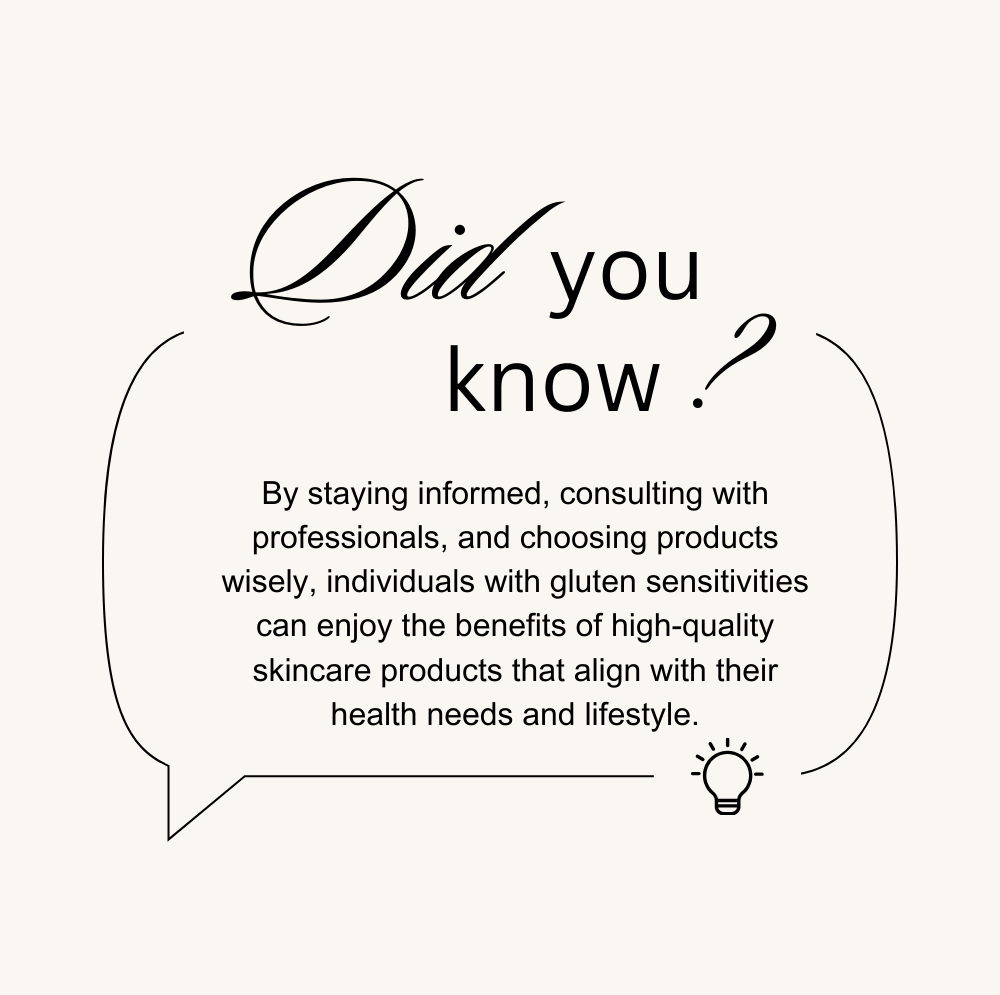
ingredients in skincare that contain gluten
Gluten, a group of proteins found in wheat, barley, and rye, is typically associated with food products. However, it’s less known that gluten can also be present in skincare, posing potential risks for individuals with gluten sensitivities or celiac disease. Understanding which skincare ingredients contain gluten is crucial for avoiding unintended exposure.
Understanding Gluten in Skincare
Gluten is the collective name for proteins found in specific grains. In skincare, gluten can sneak in through ingredients derived from these grains, acting as emollients, thickeners, or conditioning agents. Although not ingested, there is concern about whether gluten in skincare products can affect those with sensitivities.
Common Gluten-Containing Ingredients in Skincare
Hydrolyzed Wheat Protein: This ingredient is prized for its ability to retain moisture and improve hair’s feel and texture but is a red flag for those avoiding gluten.
Triticum Vulgare (Wheat Germ Oil): Known for its rich vitamin E content, wheat germ oil is a common skincare ingredient that provides excellent antioxidant benefits, yet poses a risk for gluten-sensitive individuals.
Hordeum Vulgare (Barley Extract): Utilized for its skin-softening abilities, barley extract is another gluten-containing ingredient that those with sensitivities need to be wary of.
Secale Cereale (Rye Seed Extract): Often incorporated for its skin-firming properties, rye seed extract is a gluten source that can be found in some skincare formulations.
Vitamin E (Tocopherol): Although beneficial for its antioxidant properties, vitamin E is sometimes derived from wheat germ oil, making it a hidden source of gluten.
Recognizing these ingredients on labels is crucial for individuals trying to avoid gluten in their skincare regime.
Risks and Considerations for Sensitive Individuals
For those with celiac disease or severe gluten intolerance, even trace amounts of gluten can trigger reactions. While the risk of gluten absorption through the skin is minimal, the possibility of indirect ingestion (e.g., from hand creams or lip products) warrants caution. Understanding one’s level of sensitivity is key to managing potential risks.
Alternatives and Solutions
Fortunately, the skincare industry is increasingly catering to the needs of those with gluten sensitivities. A growing number of products are explicitly labeled as gluten-free, providing safe options. When in doubt, look for certifications or direct confirmations from manufacturers regarding a product’s gluten status.
Conclusion
Awareness of gluten-containing ingredients in skincare is vital for those with gluten sensitivities or celiac disease. By educating themselves on potential sources of gluten and seeking out safe alternatives, individuals can maintain their health without compromising on skincare quality. Remaining informed and vigilant is the best defense against unintentional gluten exposure.
This structured approach provides a comprehensive overview, including identification tips and solutions for individuals concerned about gluten in skincare.





Leave a comment
This site is protected by hCaptcha and the hCaptcha Privacy Policy and Terms of Service apply.